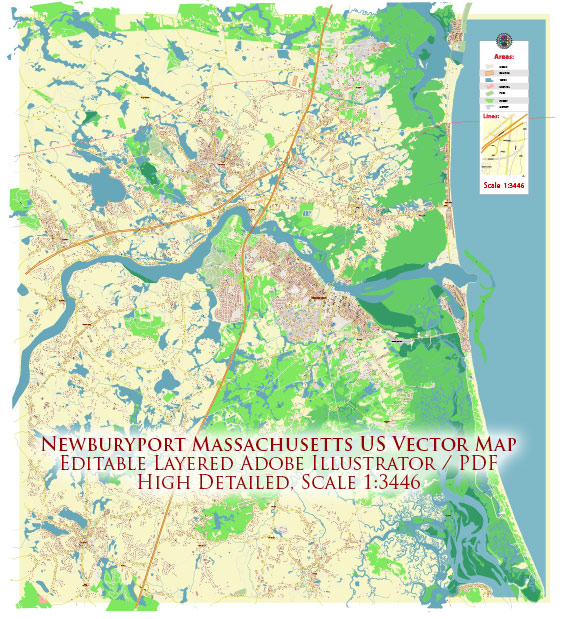Newburyport, Massachusetts, has a rich history dating back to its founding in 1635. The city’s development has been shaped by its maritime heritage, economic activities, and architectural evolution. Here’s an overview of the urban development history of Newburyport:
- Colonial Era:
- Newburyport was initially settled as part of the town of Newbury. The area’s economy was primarily based on agriculture, but its location along the Merrimack River also made it conducive to trade and shipping.
- The city’s waterfront played a crucial role during the colonial period, serving as a bustling port for shipping and trade.
- Revolutionary War and Early 19th Century:
- Newburyport played a role in the Revolutionary War, and its shipyards contributed to the war effort. After the war, the city experienced economic growth, particularly in maritime trade.
- The late 18th and early 19th centuries marked a period of prosperity for Newburyport, with shipbuilding, shipping, and trade driving the local economy.
- Industrialization and Economic Change:
- With the advent of the Industrial Revolution, Newburyport saw a shift in its economy. Industries such as textiles and manufacturing began to emerge.
- The construction of mills along the Merrimack River contributed to the city’s industrialization and attracted a diverse workforce.
- Architectural Heritage:
- The city boasts a well-preserved collection of Federal-style and Georgian architecture from the late 18th and early 19th centuries. The High Street Historic District, in particular, showcases many well-preserved historic homes.
- The preservation of historic buildings and districts has been a focus in Newburyport, contributing to its charm and character.
- Decline and Renewal:
- Like many industrial cities, Newburyport faced economic decline in the mid-20th century. The decline of traditional industries led to population loss and urban decay.
- In the latter half of the 20th century, efforts were made to revitalize the city. Historic preservation, tourism, and the development of cultural amenities contributed to its renewal.
- Modern Era:
- Today, Newburyport is a vibrant city that successfully blends its historic charm with modern amenities. The waterfront area, once central to maritime trade, is now a focal point for tourism, featuring shops, restaurants, and recreational activities.
- The city’s commitment to preserving its historic character is evident in its zoning regulations and efforts to maintain the integrity of its historic districts.
Overall, Newburyport’s urban development reflects its journey from a colonial port to an industrial center and, finally, to a modern, vibrant community that values its historical heritage. The city’s commitment to preserving its unique character has allowed it to evolve while maintaining a strong connection to its past.


 Author: Kirill Shrayber, Ph.D.
Author: Kirill Shrayber, Ph.D.